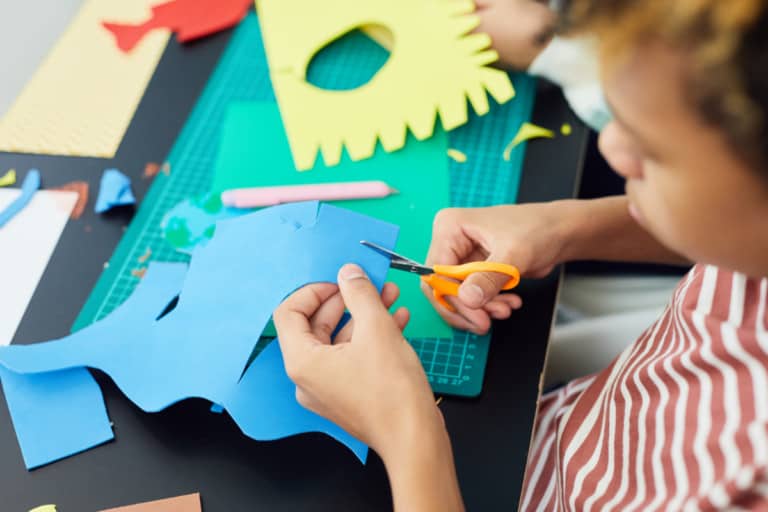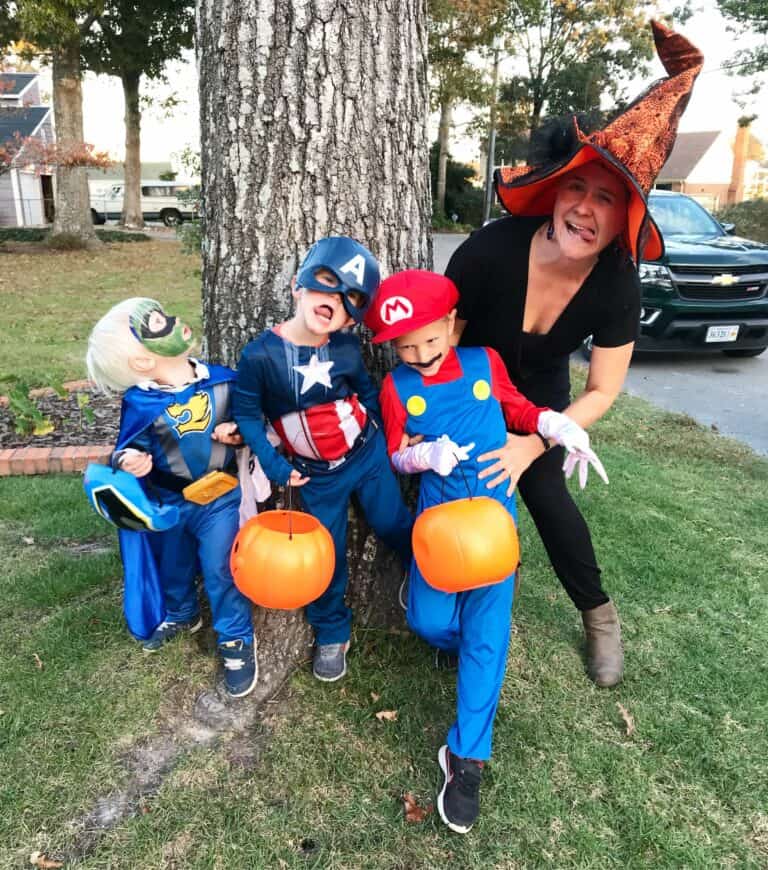20+ Tips How to Create a Print-Rich Environment
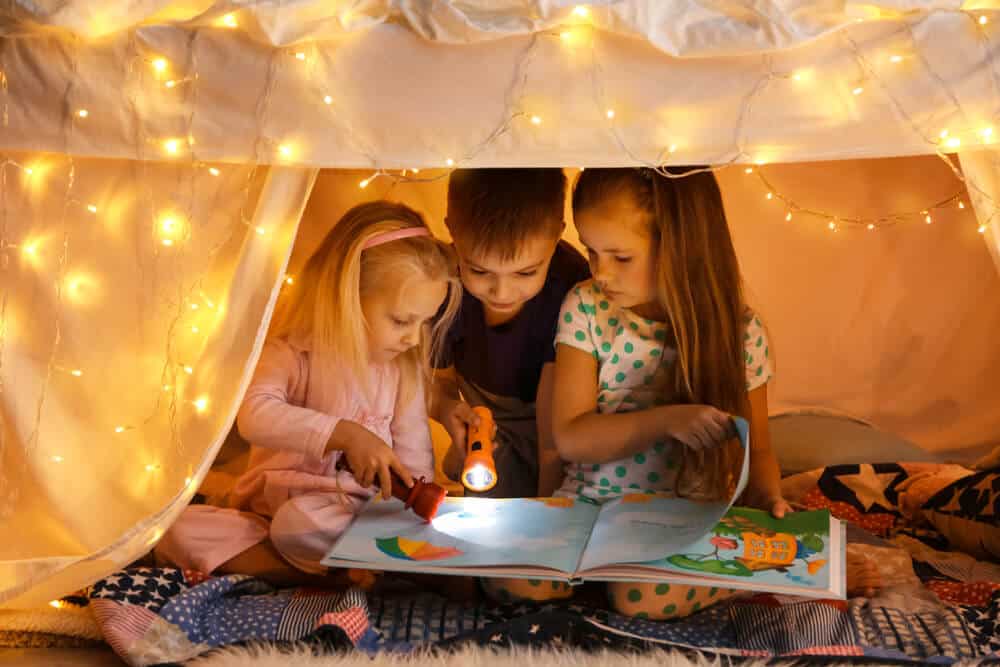
A love of reading can begin early. Josie Ortega advises parents not to be anxious about when to teach your child to read, but to focus on creating a print-rich environment.
Way before children are old enough to learn to read, parents can pave the way by fostering early literacy skills and cultivating a print-rich environment at home.
Time Out. What Does That Even Mean?
t’s just a way to say that we parents can help kids see that books and reading are valued. Young kids will be clued in that the written word is another way we can communicate; that those lines and squiggles mean something.
Reading to children provides wonderful benefits, including:
- Increased vocabulary
- Better listening skills and memory
- A strong imagination
- A love of books that will serve them throughout life
Before we get stressed out about how to do this, let’s take a deep breath. Here’s the spoiler alert: Have books. Read together. Have paper and something to scribble with. Hang out with your kids.
Read on if you want more details and ideas! If you’re like me, it helps to think through some concrete action items. Don’t tell my kids: I think I benefit from the structure and routines we’ve set up just as much as they do.
Why a Print-Rich Environment?
Studies have shown that kids are better prepared for kindergarten when they come from so-called print-rich environments and when they show high interest in reading.
Jim Trelease, author of The Read-Aloud Handbook, outlines some factors that researchers found in the home environments of high-interest readers:
- Mothers read for leisure.
- Fathers read for leisure.
- More books in the home (compared with the low-interest readers).
- Children taken to the library.
- Child has a library card.
- Child read to daily.
OK. Totally do-able! Great news: you’re helping your child learn to love reading when you relax with your magazine and a favorite beverage. Keep up the good work, you reading hero.
And a quick confession: my kids don’t have their own library cards. The oldest does know how to check out books with mine . . . can we count that? I can barely keep up with my own card, so I think we’ll stick to the status quo for awhile.
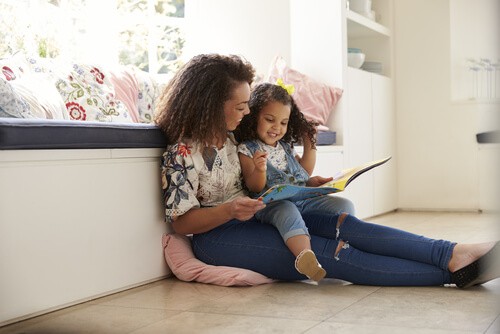
Books at Home
Take a look around your house and take stock of whether books are valued and usable. Here are a few specific ideas to make books available for both kids and adults.
- Keep reference books handy—like dictionaries or atlases. That way you can look up things in an actual, real book instead of online, when possible. At our house we especially enjoy consulting the Spanish-English dictionary and a sign language dictionary.
- Make soft books, board books, and Indestructibles available for the youngest kids—so that they can have free access to books without you worrying about books being destroyed. (Though you should expect some attrition no matter what.)
- You might gather special books into a particular bag or basket for the car, or for church, or doctor’s appointments.
- Check out seasonal books from the library. Read Aloud Revival provides monthly book lists with great ideas to get started.
A study found that “people who grow up with books at home tend to have higher reading comprehension and better mathematical and digital communication skills.” Get that home library going, and you’re setting everyone up for success.
Print-Rich Reading Atmosphere at Home
On top of providing books and reading with your children, you can think about other small steps to boost your kid’s familiarity with the written word.
I found many practical ideas in Superbaby—a book whose title makes me cringe!—but whose author Jenn Mann synthesized tons of research about what’s especially beneficial for a child’s development from 0 to 3 years old.
Mann warns against formal instruction, like drilling with flashcards, at this young age. But, she suggests plenty of steps that parents and caregivers can take to make reading fun and enjoyable.

- Use your home décor to build familiarity with letters, words, and books.
- Feature a child’s name on the wall of his or her room, or on the bedroom door. Or just the first letter of his or her name. [HELLO, MONOGRAMS!]
- Frame the covers of beloved books for some colorful, pro-literacy art. I think Madeline or The Story of Ferdinand would be great for this! (By the way, I always remove dust jackets from books, and I believe firmly that if you do too, your frustration with reading with kids will be cut by 75%.)
- Have a blast building an enchanting, awesome reading nook.
- Classic ABC magnets on the fridge.
- Don’t limit the reading experience to just reading.
- You might add some items to your costume stash that encourage dress up and pretend play re-enacting favorite characters and stories.
- Choose Halloween costumes from book characters.
- Take a book-inspired outing, as simple as visiting some local ducks and reading Make Way for Ducklings.
Print-Rich Writing Atmosphere, Too
Researchers have found that the brain uses writing the letters as an important step in learning to read! Who knew? (Not I.)
- Messy as it can be, keep paper and crayons, colored pencils, pastels, etc. around and available for you and your kids to work with.
- Have paper and supplies for kids to make their own books or signs eventually.
- Scissors are a great tool for little kids to build hand strength, preparing them with the small motor skills needed in kindergarten. My great aunt Jeaneine told me that one. Just let them cut, cut away!
They’ll begin with scribbling, and cutting confetti with scissors, and eventually be able to trace a line, cut along a line, copy letters, learn to write their name. You will be off to the races, my friend. (And I will cry with you over their swiftly passing childhood.)
Reading Habits
Even with wonderful books at our fingertips, we can fail to take advantage of them! To develop the habit, you might try making reading an official part of the family schedule, and you can work it into other areas of life as well.
- Read a book after mealtime.
- Read before or after bath—or during bath! You could read aloud or give ‘em those waterproof Indestructibles. We totally live in the future.
- And of course: the bedtime story.
- Use your finger to trace under words as you read.
- Read signs to your kids when you’re out and about.
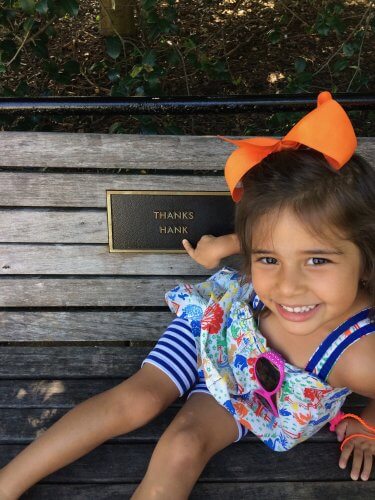
- Be regulars at library story time.
- Write a letter or postcard together (or, fine, I’ll allow an email or a text).
- Record loved ones reading favorite stories. Just email a relative with the text of a short, favorite book. Ask them to leave you a voicemail reading it. Play the voicemail as you and the kids follow along in the book. Your kids will be delighted and amazed. This is perfect for when a parent is on a trip, too.
This list above should get the wheels turning and give a couple of easy steps—not all the ideas at once!—that will help make reading together a beloved and enjoyable time for your family.
If your baby still insists on eating the book, or your toddler just ripped the cover off: keep moving forward. Little by little you’ll build a reading culture that you’ll come to treasure. Just keep creating that print-rich environment.



